Review: Brachiosaurus (Saurierpark Kleinwelka, Sachsen)
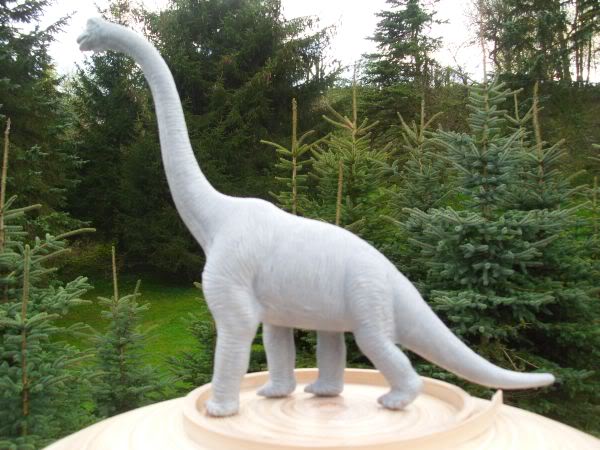
 Hello, my name is Stefan Schröder, aka ‘Libraraptor’ and I am a faithful soul on both the Dinosaur Toy Blog and the Dinosaur Toy Forum since 2008, when I stumbled upon the forum looking for the Invicta blue whale in order to complete my collection. I found friendly people there and open ears and eyes for my growing collection. Later I began reviewing toys and figures here on the blog - sometimes in a clumsy English, I must admit. But I still enjoy reviewing as much as I did in 2009.
I am so happy to still be a part of the big DTB / DTF family!
I come from Germany, was born in 1977, I’m married and I have a daughter and a son. I am a full-time social worker, working at schools for children with special educational needs.
My collection is sometimes said to be somewhat quirky, I collect and review what I like with no special goal or focus. I am mostly into vintage and monochrome figures and museum exclusives.
Here’s a video (on the Dinotoyblog Youtube channel) showing my collection, it’s a little outdated, but still shows the main part of it.
Hello, my name is Stefan Schröder, aka ‘Libraraptor’ and I am a faithful soul on both the Dinosaur Toy Blog and the Dinosaur Toy Forum since 2008, when I stumbled upon the forum looking for the Invicta blue whale in order to complete my collection. I found friendly people there and open ears and eyes for my growing collection. Later I began reviewing toys and figures here on the blog - sometimes in a clumsy English, I must admit. But I still enjoy reviewing as much as I did in 2009.
I am so happy to still be a part of the big DTB / DTF family!
I come from Germany, was born in 1977, I’m married and I have a daughter and a son. I am a full-time social worker, working at schools for children with special educational needs.
My collection is sometimes said to be somewhat quirky, I collect and review what I like with no special goal or focus. I am mostly into vintage and monochrome figures and museum exclusives.
Here’s a video (on the Dinotoyblog Youtube channel) showing my collection, it’s a little outdated, but still shows the main part of it.
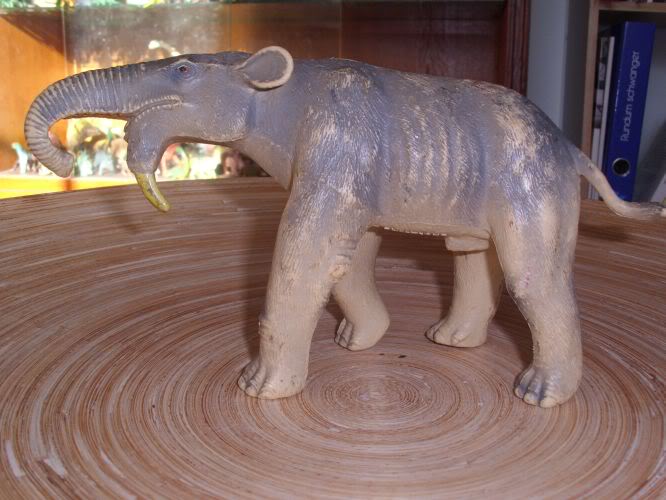

Most of the dinosaurs Larami released in the 1990s were more or less decent copies of Invicta originals, made of vinyl. Three animals did not base on Invicta originals: A Styracosaurus, a Parasaurolophus and the reviewed Ankylosaurus.
I probably don´t promise too much when I say this is one of the ugliest animals that have ever been reviewed here.
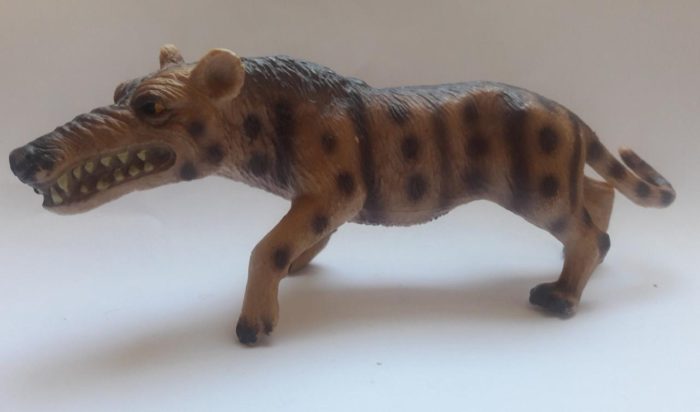
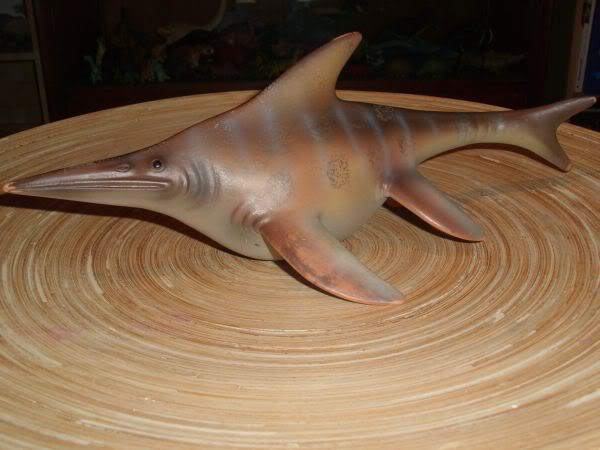
Shonisaurus was an upper Triassic Ichtyosaur from Northern Ameria that probably fit the ecological niche of today´s sperm whales. The fact that adult animals did not have teeth can as well lead to the conclusion that it could have been a plankton filtering animal. Shonisaurus sikanniensis with a length of some 23m is the largest marine reptile that has been described by now.
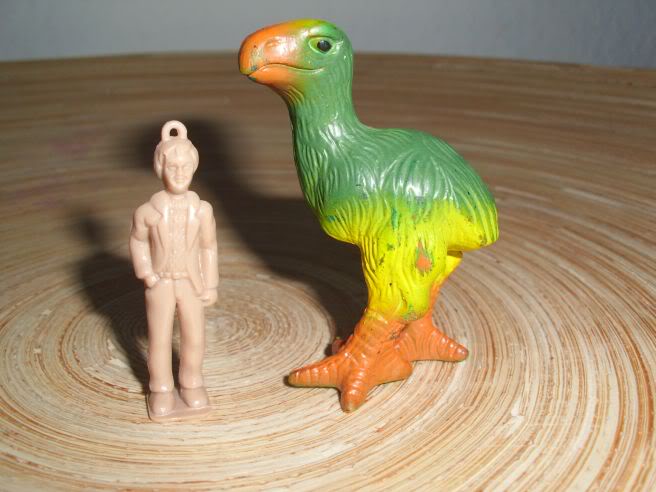
The Vintage Schleich Diatryma is a nice little figure to have! It is brightly coloured (although I know of monochrome ones being out there) and looks as if it is smiling at you. Looking at this figure, one can’t believe it was a more or less aggressive Eocene omnivore, lurking for prey in the Messel woods, not even avoiding small horses.
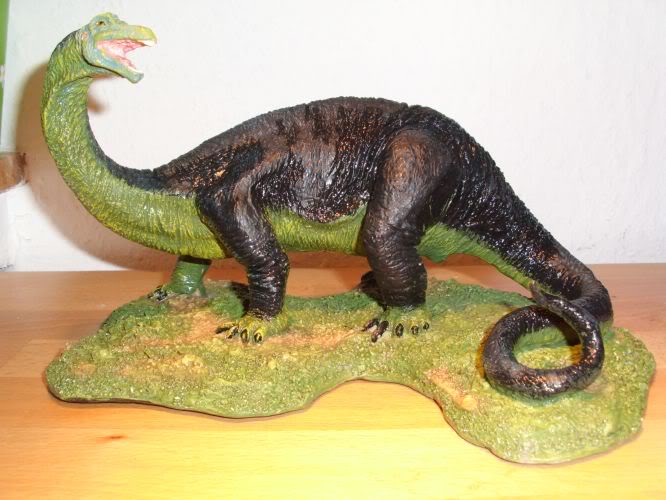
Goebel is a well-known German company that produces porcelain dolls and figures for windowsills of old, boring housewives. In 1992 they (Goebel, not the housewives…) released respectively distributed four dinosaur figures. Apatosaurus´ comrades in this line were Styracosaurus, Triceratops and Stegosaurus.
Goebel green and bright green (there is not that much variety in the paintjob of both the base and the animal) “World Of Jura” Apatosaurus is a special figure in many ways.
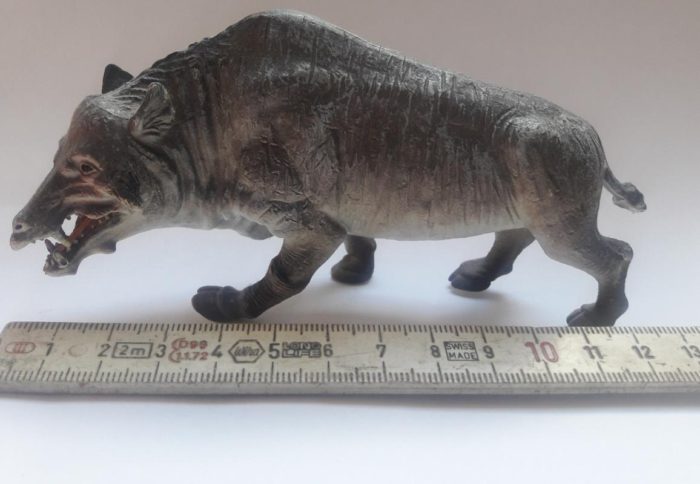
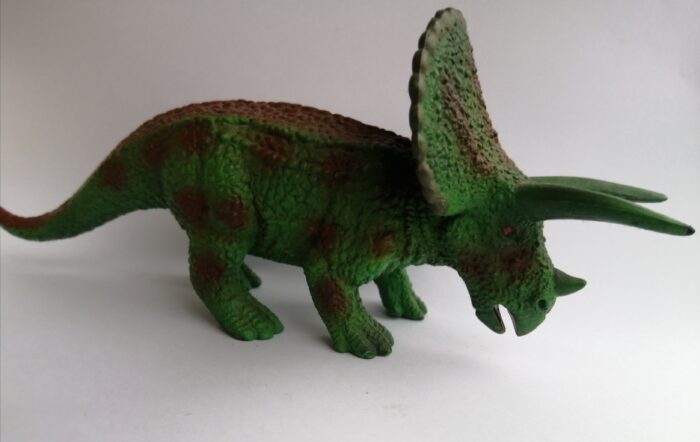
Have you ever wondered where the name „greenhorn“comes from? Well, here is the answer. Just take a quick look at the head of this Simba Triceratops!
Simba is a German company producing and selling nearly every kind of toy. Their rubber dinosaurs are just a small section of their assortment.
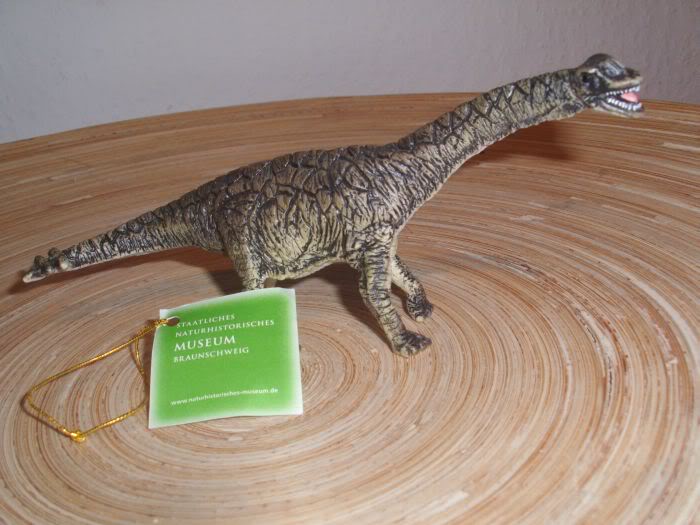


Mastodonsaurus (“breast tooth lizard”) was a Russian and European temnospondyl that belonged to a group of advanced, mostly Triassic amphibians called capitosaurids. It lived in swampy pools and fed mainly on fish, but probably did not avoid land living animals such as small early archosaurids. The giant head was a powerful tool for those feeding habits.